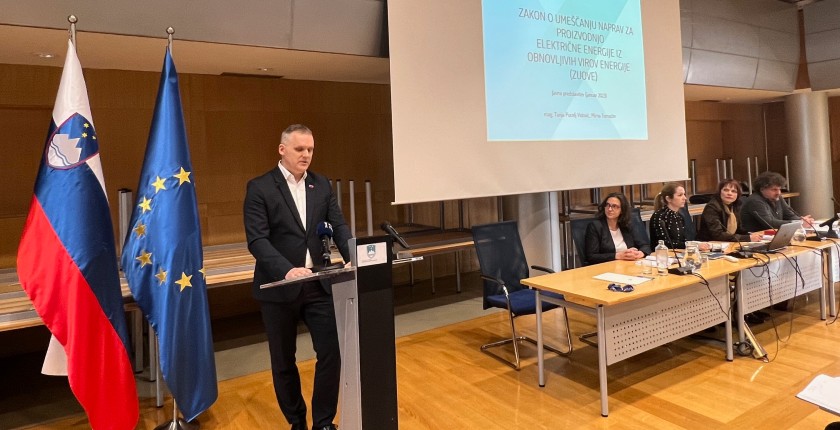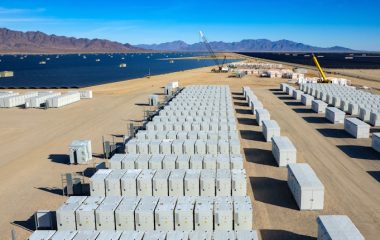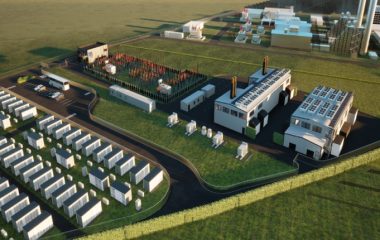
Photo: Ministry of Environment, Climate and Energy
The Ministry of Environment, Climate and Energy of Slovenia presented a draft bill on siting renewable energy facilities with the aim to ramp up the construction of wind and solar power plants by regulating spatial planning.
Slovenia is lagging behind in the field of utilization of solar energy and, especially, wind energy, Minister of Environment, Climate and Energy Bojan Kumer said. He presented a draft bill on siting devices for the production of electricity from renewable sources and pointed out that it is aimed at encouraging investment in the sector. The country has only two wind turbines in operation.
Some environmentalists are critical as the proposition opens the way for simplifying environmental impact assessments. Slovenia is following the European Union’s REPowerEU plan, which is envisaged to ramp up the deployment of green energy facilities to cut the dependence on Russian fossil fuels as soon as possible.
Parking lots, former mines, land on side of roads offer great potential
The draft includes regulations for energy storage devices and the procedure for connecting power plants to the electricity network. The idea is to establish special areas for renewables but also to utilize noise barriers on highways, stretches of land near main roads and degraded agricultural land. Other suitable places for solar power are parking lots, roofs and former mining areas.
The ministry intends to enable the use of land for multiple purposes. The authors of the proposition argue that the original purpose would still have to be maintained. They want to introduce the possibility, for instance, to set up solar and wind power plants on artificial lakes and erect wind turbines in forests.
Impact of floating solar power plants on aquatic life hasn’t been determined yet
Some biologists and activists expressed concern that floating solar power plants would harm aquatic life by depriving it of light and argued that there is no relevant scientific research. They also said such panels may heat the water too much.
Minister Bojan Kumer warned that Slovenia is lagging behind its targeted renewable energy share and that the compensation that it pays to other EU countries to make up for it is rising. The goal for 2030 is currently 27% but, according to recent announcements, an upcoming revision could lift it to between 35% and 45%.
The use of agricultural land and natural habitats for renewables has become a fiercely debated issue in Europe and beyond as it may impact food production and biodiversity.









Be the first one to comment on this article.